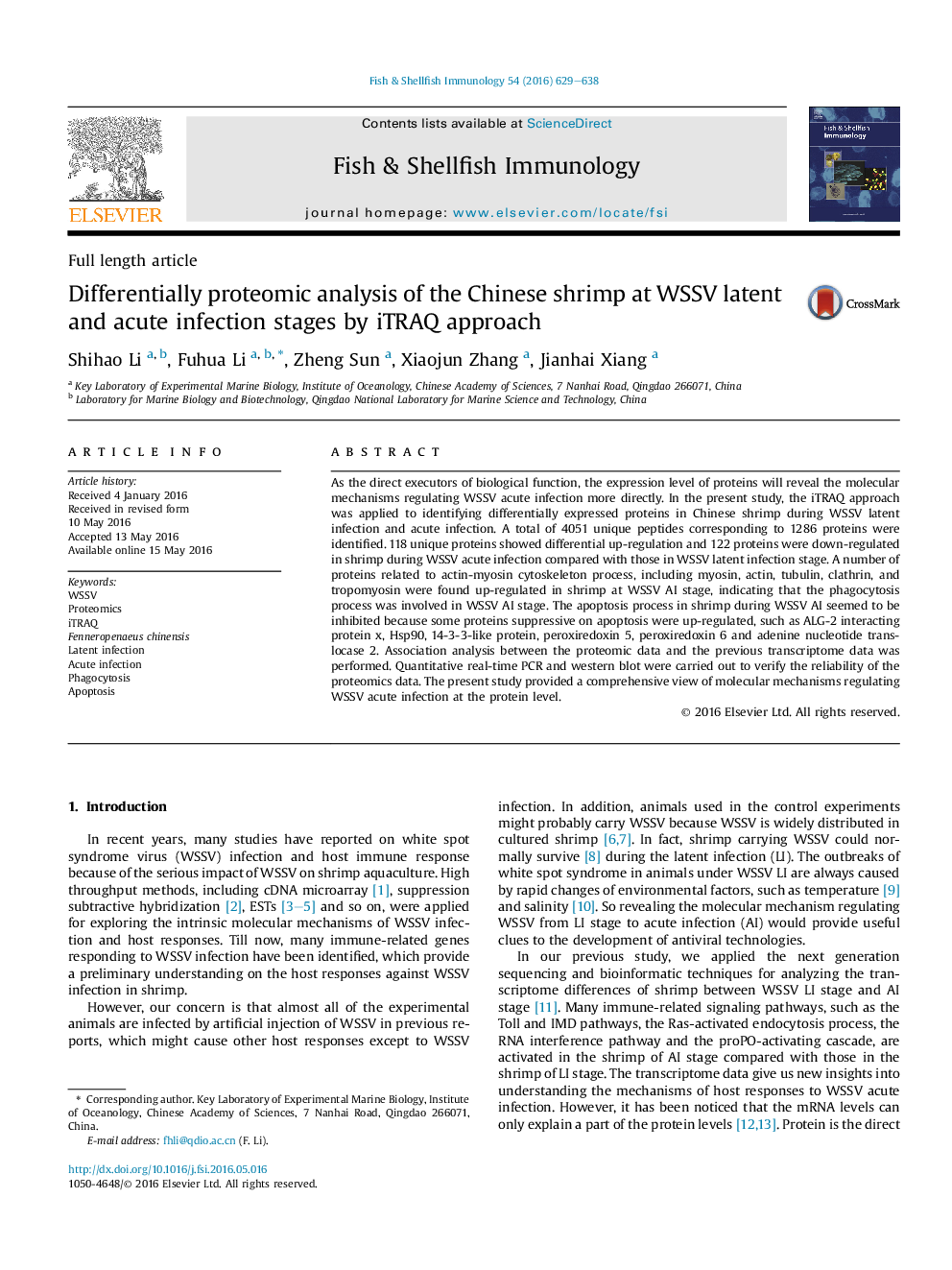| Article ID | Journal | Published Year | Pages | File Type |
|---|---|---|---|---|
| 2430653 | Fish & Shellfish Immunology | 2016 | 10 Pages |
•The iTRAQ approach was used to identify differentially expressed proteins in shrimp during WSSV latent and acute infection.•Many proteins related to cytoskeleton, including myosin, actin, tubulin, and tropomyosin were up-regulated at AI stage.•The apoptosis process in WSSV AI shrimp seemed to be inhibited as some proteins suppressive on apoptosis were up-regulated.•83.72% of differentially expressed proteins/genes have a same expression trend between the proteome and transcriptome data.
As the direct executors of biological function, the expression level of proteins will reveal the molecular mechanisms regulating WSSV acute infection more directly. In the present study, the iTRAQ approach was applied to identifying differentially expressed proteins in Chinese shrimp during WSSV latent infection and acute infection. A total of 4051 unique peptides corresponding to 1286 proteins were identified. 118 unique proteins showed differential up-regulation and 122 proteins were down-regulated in shrimp during WSSV acute infection compared with those in WSSV latent infection stage. A number of proteins related to actin-myosin cytoskeleton process, including myosin, actin, tubulin, clathrin, and tropomyosin were found up-regulated in shrimp at WSSV AI stage, indicating that the phagocytosis process was involved in WSSV AI stage. The apoptosis process in shrimp during WSSV AI seemed to be inhibited because some proteins suppressive on apoptosis were up-regulated, such as ALG-2 interacting protein x, Hsp90, 14-3-3-like protein, peroxiredoxin 5, peroxiredoxin 6 and adenine nucleotide translocase 2. Association analysis between the proteomic data and the previous transcriptome data was performed. Quantitative real-time PCR and western blot were carried out to verify the reliability of the proteomics data. The present study provided a comprehensive view of molecular mechanisms regulating WSSV acute infection at the protein level.
Graphical abstractFigure optionsDownload full-size imageDownload as PowerPoint slide
